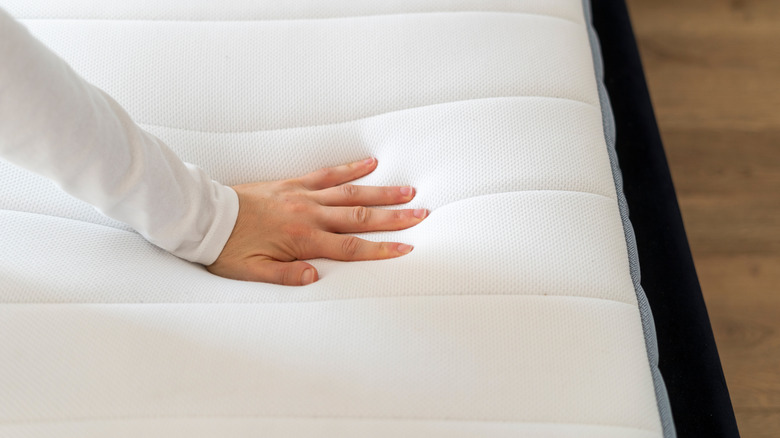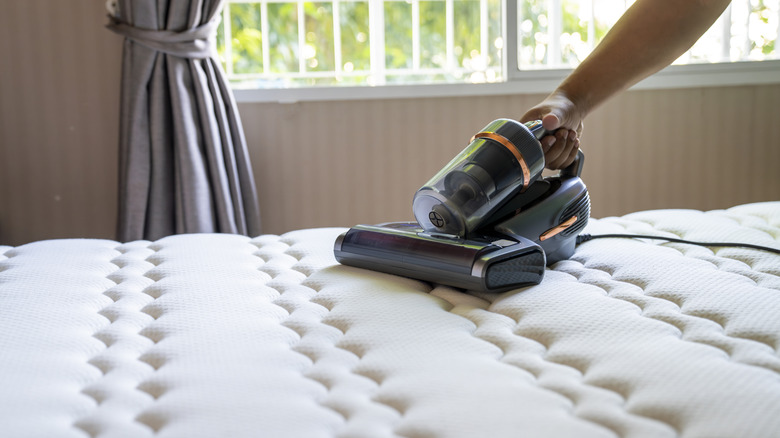Avoid Damaging Your Memory Foam Mattress When Cleaning With Baking Soda
Cleaning your mattress is one of the least glamorous tasks you can do with it (we'd all rather just be sleeping, right?), but cleaning it properly can actually make or break the lifespan of your bed. And when it comes to mattress care, baking soda often takes center stage as an inexpensive and effective solution, which is likely already sitting in your kitchen somewhere. To use it, you simply sprinkle a layer across the surface, which works to absorb odors, lift small stains, and overall give it a bit of a refresh. It's one of many baking soda cleaning tricks worth trying, but be warned that there are a few rules to keep in mind, especially if you're dealing with a memory foam mattress. Rule number one: Use a light hand.
Memory foam may look sturdy and durable, but it's made of soft, open cells that can easily trap moisture. As a result, water can easily leech into the material and take a long time to dry, creating an unpleasant smell or, even worse, mold. Experts advise vacuuming gently after the baking soda has sat for several hours to lift away powder without pulling at or damaging the fabric. A light touch is key here since harsh scrubbing or really strong suction will only stress the special foam. While memory foam is the best option for side sleepers and for anyone with aches and pains, its cushier build means you need to give it more careful handling than a just a spring or hybrid mattress.
Know what makes memory foam different
Memory foam is specifically designed to respond to heat and weight, allowing it to mold around the body for pressure relief and provide a slow, sinking-in sensation. However, the layering of this unique material makes it different from other mattresses — unlike spring mattresses or hybrid mattresses, memory foam can't be flipped, otherwise you'd end up sleeping on the non-memory side of the foam. Recognizing the distinction between hybrid and memory foam helps explain why a delicate approach is necessary when cleaning.
So while baking soda is safe, patience is required as it needs to be left on the surface for a few hours, then vacuumed off as gently as possible (a brush attachment is a good idea here), but thoroughly too, as rushing through vacuuming may leave behind a dusty residue. If you need to tackle stains, baking soda mixed with a tiny splash of water can help, but remember to dab as opposed to scrub to prevent excessive moisture from seeping into the mattress. Memory foam is not cheap to replace, so this simple cleaning routine can help protect its cushiony feel for an optimal sleeping experience for years to come.

